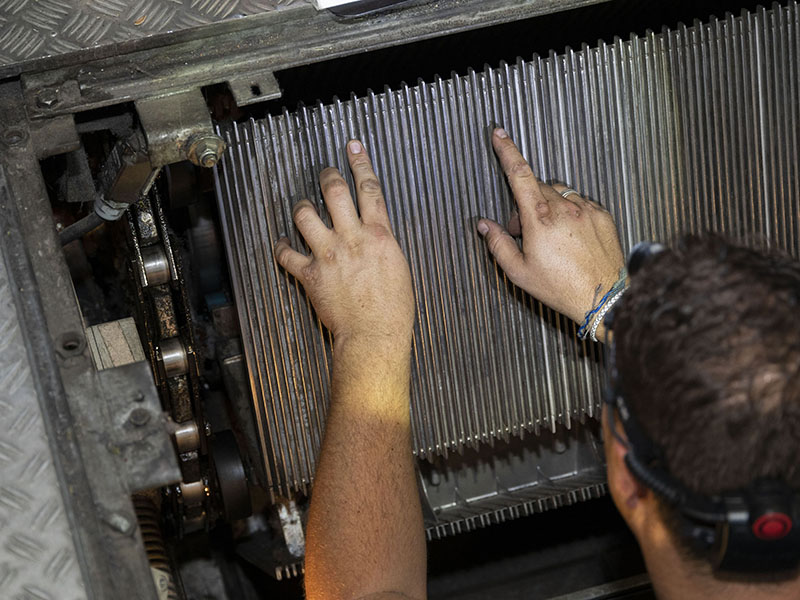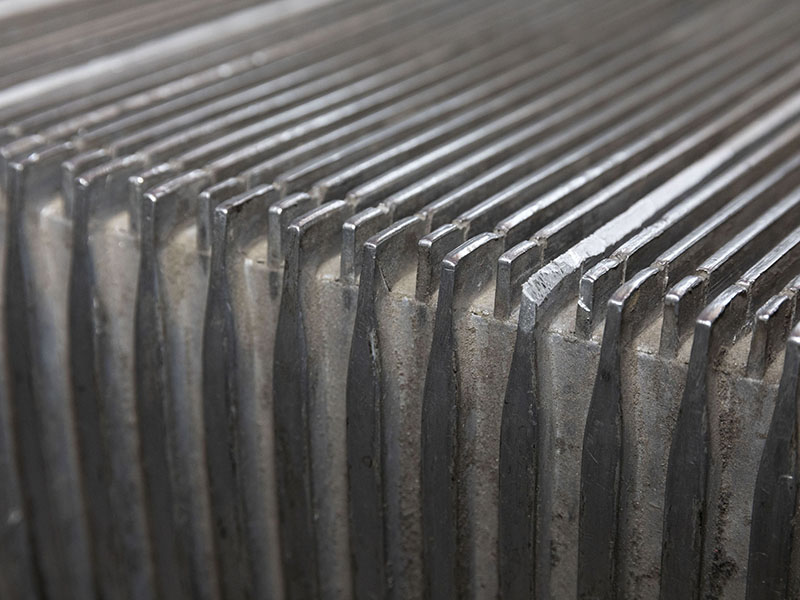Photo: © helinntonfantin/123RF.com

News | April 2024
The Spaniards are coming
Do the Big 4 have to get ready for expansion? A company transaction largely unnoticed by the public now points to this.

The damaged cleats are cleaned before the repair to remove any soiling and obtain a completely clean surface. (Photo: © Weber Tec)
November 2019
Weber Tec is specialised in the repair of defective escalator cleats and has developed a repair method in the form of its "EsCare" with which damage can be eliminated quickly, affordably and efficiently.
The certified maintenance procedure is unique on the German market and saves customers valuable time and money. Managing director Wolfgang Weber and authorised signatory Mike Weber explained in an interview how escalator defects occur and what Weber Tec does for maintenance.
What produces defects in escalator cleats?
W. Weber: The steps of an escalator run up and down through a so-called comb plate, which is supposed to prevent objects being drawn into the escalator. If foreign bodies do end up on the escalator – pebbles, gravel from shoe soles, a screw, etc. - these tend to get stuck in the comb plates. However, the escalator does not come to a halt due to such slight resistance and continues to run past the foreign body. As a result, in a very short time the same cleat is worn away on all steps – of course even faster if the escalator is in constant use or outdoors.
 What are the consequences of these defects?
What are the consequences of these defects?
W. Weber: Abrasion of the cleats against foreign bodies produces a fundamental change in shape of the cleats, for example, they get thinner. But at the same time, the European EN115 standard specifies the minimum width and height required for cleats. A ground-down cleat can be as sharp as a knife and as a result be capable of inflicting severe injuries. For this reason, among others, escalators are regularly inspected by authorised inspection bodies.
What has to be borne in mind during repairs?
M. Weber: First, the damaged cleats have to be cleaned in order to obtain a completely clean surface. Only then will the repair be viable in the long term. After this, the cleats are filled with our certified EsCare fillers and brought into shape. The cleats have now not only been ‘blunted’, but once again also meet the requirements of EN115. If so desired, the repaired cleats can then be painted in a colour chosen by the customer in order to fit in with the appearance of the remaining cleats.
What are the challenges posed by the work?
M. Weber: They differ from job to job. On the one hand, the technology has to be in order, i.e. the escalator or moving walkway has to work and the infrastructure, such as the power connections, has to be available. On the other, customers have differing preferences regarding the work process: is there a set time window? Do the repairs have to be carried out during the day or the night? Are the steps in a security zone? Is the ambient temperature sufficient on the planned work date? All of these questions have to be clarified in advance in order to guarantee everything goes smoothly.
How time-consuming is a repair?
M. Weber: For an average escalator, that’s about 70 – 80 steps with about three defective cleats per step, we need one working day. That’s very little time compared to all other options. In addition, we’re so flexible with our system and our teams that we only need a few days lead time.
 What are the down times with all other customary repair methods?
What are the down times with all other customary repair methods?
W. Weber: When it comes to the time required, there aren’t many alternatives for the operator. The steps either have to be replaced or the welded joints opened – this procedure is very time consuming. In both cases, all of the steps have to be removed and reinstalled, which alone takes longer than the repair with EsCare. In the case of welding, there are other cost- and time-intensive factors in addition – e.g. the attachment and detachment of the rollers, packaging, transport to and from the repair company and a repair period that sometimes last weeks. When replacing steps, lengthy delivery times have to be calculated – provided that’s even possible, since old step types sometimes aren’t in production anymore. We can also repair damaged steps that have been demounted if the customer has put them into storage.
What are the other advantages of EsCare?
W. Weber: Apart from the time-, obviously the cost-saving. Compared to buying new steps, repair with EsCare on average saves two-thirds of the costs. In addition, the repairs can theoretically be repeated on unlimited occasions, as long as the step body is still intact.
Write a comment